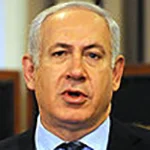 There have been many changes in PR strategies over the years.
There have been many changes in PR strategies over the years.
Of all the approaches offered, arguably the one that can most backfire is to recommend a major costly press conference and no one from the media shows up.
Is there a PR person that doesn't have nightmares about the above scenario becoming a reality? I know a few who no longer worry about spending $50K to $75Kon lavish media-less press conferences. That's because they were quickly fired after their fiascos.
But the days of PR people worrying about media-less press conferences might soon be history. Because some news organizations, including the New York Times, the Associated Press, CNN and NBC Universal are considering using drones to cover news, according to stories in the Times, and Crains New York.
And if you don’t read the Columbia Journalism Review from cover-to-cover, you might have missed a short story about drone news coverage, which said that a sub-committee of the American Publishers Association has voted $4,500,000 for a lobbying campaign to permit drone news coverage by 2020.
An unfinished study of how drone coverage would affect our business is now being conducted. While still in its preliminary stage, some elements of the study were leaked to me:
Positive possibilities for the PR business:
Editors would be more prone to cover press conferences if they didn't have to send a live reporter to the event.
Drones can’t ask embarrassing questions about why a company is spending tens of thousands of dollars on a press conference or why top execs are making millions when the company just announced its sixth straight quarterly loss.
PR staffers who have never spoken to or seen a live reporter wouldn't have to admit that they can't answer reporter's questions because they were pulled in as last minute replacements on the account, after more experienced and proficient staffers were terminated because they made a few more bucks a week.
Those Ken and Barbie-looking PR newbies wouldn’t be embarrassed to admit that they have just been hired out of communication’s schools and are forbidden to speak to media.
Clients can sprout their propaganda without being interrupted by disbelieving laughter from live media, although it could be embarrassing if the drones leave during the conference (as live reporters often do during non-news press conferences, unless food is being served) or the drone leaks oil on the CEO’s custom-made $8,000 suit, or even worse on his trophy-wife’s just dyed hair.
Negative Possibilities for the PR business:
On the media side, editors would no longer have to make excuses to PR people like “can’t talk now, on deadline,” or “we’ll bring it up at our news conference.”
Story rejections will now be delivered immediately via drones programmed to say: “This is junk. Don’t waste my time following up,” even if an editor hasn’t read your pitch.
A major negative of drone coverage is that the great majority of PR people won't know a specific beat reporter or segment editor to follow-up with.
Also, when calling the assignment desk, a voice-activated computer might say, "Sorry, the drone you want has been reassigned to Iraq or terminated because of drone cutbacks.”
Press conferences would no longer be held in hotel ballrooms or high-priced fancy eateries, to the dismay of the few human reporters remaining.
The pressers would have to be held outdoors so the drones could hover over the area while reporting to their computer editors, "No story here." Also, it might rain and editors might recall the drone before possible water damage to its mechanism (the one time in your career you have a page one story possibility).
And there is the threat of more government censorship than now exists. The Federal Aviation Administration has already issued warning letters about using drones to cover news to TV stations and journalism schools.
* * *
Arthur Solomon, who was senior VP at Burson-Marsteller, contributes to PR/sports publications, consults on PR projects and serves on the Seoul Peace Prize nominating committee. He can be reached at [email protected].


 Publicis Groupe CEO Arthur Sadoun puts competition on notice... Macy's throws in the towel as it appoints two directors nominated by its unwanted suitor... The Profile in Wimpery Award goes to the Ford Presidential Foundation for stiffing American hero and former Wyoming Congresswoman Liz Cheney.
Publicis Groupe CEO Arthur Sadoun puts competition on notice... Macy's throws in the towel as it appoints two directors nominated by its unwanted suitor... The Profile in Wimpery Award goes to the Ford Presidential Foundation for stiffing American hero and former Wyoming Congresswoman Liz Cheney. JPMorgan Chase chief Jamie Dimon's "letter to shareholders" is a must-read for PR people and others interested in fixing America and living up to its potential... Get ready for the PPE shortage when the next pandemic hits... Nixing Netanyahu. Gaza carnage turns US opinion against Israel's prime minister.
JPMorgan Chase chief Jamie Dimon's "letter to shareholders" is a must-read for PR people and others interested in fixing America and living up to its potential... Get ready for the PPE shortage when the next pandemic hits... Nixing Netanyahu. Gaza carnage turns US opinion against Israel's prime minister. Trump Media & Technology Group sees Elon Musk's X as an option for those who want the free expression promised by Truth Social but without Donald Trump, owner of 57.3 percent of TMTG... Chalk one up for "anti-woke warrior" governor Greg Abbott as University of Texas lays off 60 DEI-related staffers... Five percent of Americans see the US as its own worst enemy, according to Gallup.
Trump Media & Technology Group sees Elon Musk's X as an option for those who want the free expression promised by Truth Social but without Donald Trump, owner of 57.3 percent of TMTG... Chalk one up for "anti-woke warrior" governor Greg Abbott as University of Texas lays off 60 DEI-related staffers... Five percent of Americans see the US as its own worst enemy, according to Gallup. Nine of the Top 100 firms that participated in O'Dwyer's rankings last year apparently threw in the towel for the 2024 scorecard. Seven other firms also went AWOL.
Nine of the Top 100 firms that participated in O'Dwyer's rankings last year apparently threw in the towel for the 2024 scorecard. Seven other firms also went AWOL. The silence of the White House enables Israel's crackdown on foreign media as it objects to coverage of the carnage in Gaza... Israel plans yet another probe. Promises investigation of its "unintentional" attack on workers delivering food to famine-sticken Gaza... Trump White House media star Hope Hicks to return to spotlight.
The silence of the White House enables Israel's crackdown on foreign media as it objects to coverage of the carnage in Gaza... Israel plans yet another probe. Promises investigation of its "unintentional" attack on workers delivering food to famine-sticken Gaza... Trump White House media star Hope Hicks to return to spotlight.


 Have a comment? Send it to
Have a comment? Send it to 
No comments have been submitted for this story yet.